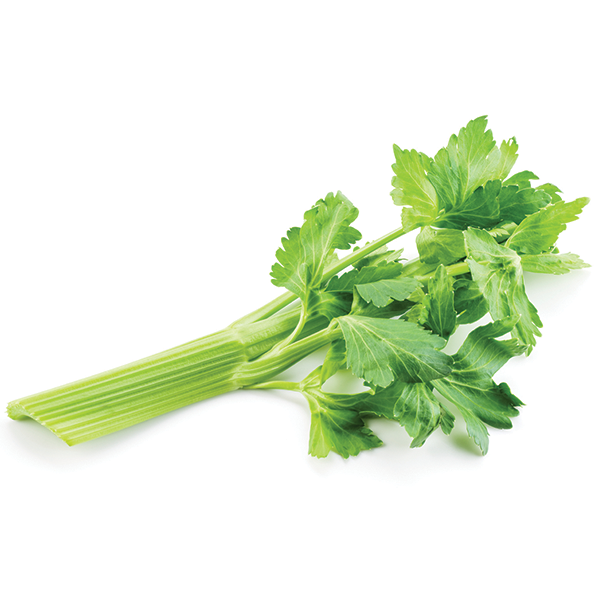
Celery’s versatility is its biggest selling point. It adds flavor and texture to raw and cooked dishes while keeping the calorie count low, so be sure to promote it for a variety of uses.
Shipping
50- to 60-lb. cartons, naked, 18, 24, 30, 36 or 48 count 50- to 60-lb. cartons, sleeved, 18, 24, 30, 36 or 48 count RPC 6416, 6419, 6420, 6423, 6425, 6426, 6428 Hearts 18 1-lb. bags 12 11/2-lb. bags Foodservice packs Whole product continues to be packed according to size, ranging from 18- to 48-count. Celery hearts come in 12-, 18- and 24-count. Diced or cut celery 4 5-lb. bags, 1/4 –inch, ½-inch or 4-inch sticks 2 5-lb. bags, 1/4 –inch, ½-inch or 4-inch sticks
Grades
U.S. extra No. 1 U.S. No. 1 U.S. No. 2 Not all celery is graded. Ungraded celery is called “unclassified.”
Handling
Temperature: 32 to 36 F, 0 to 2 C Relative humidity: 90-95% Mist: yes (Do not mist wrapped product.) Typical shelf life: 14 to 28 days from harvest, 3 to 5 days in store Odor-sensitive. Do not store or transport with commodities that produce odors, such as apples, carrots, bulb onions or pears. Odor-producer. Do not store or transport with odor-sensitive produce. Fresh-cut Store fresh-cut celery at 34 F, 1 C, and keep bags closed until used. Celery will dehydrate if left uncovered. Place product in an ice water bath to replace moisture.
20 lb. diced = about 2⁄3 standard case 20 lb. sticks = about 1 standard case 11⁄3 lb. = 1 lb. prepared usable celery 1 lb. stalks = 4 cups chopped or sliced 4 cups raw = 3 cups cooked 1 lb. prepared = 4 servings 1 medium bunch = 4 to 6 servings